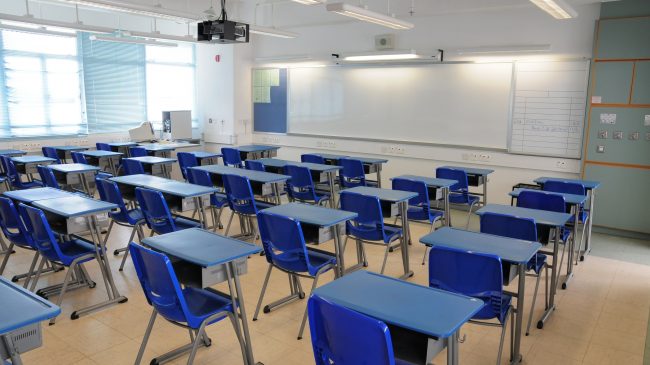In late October, the Washington Supreme Court ruled that the state’s 12 charter schools can continue to receive public dollars. While school choice advocates may breathe a sigh of relief for now, this is only the most recent development in a continuing nationwide fight for the legitimacy of public charter schools. All but six states allow charters, but they vary in how politically hospitable they are to both charter expansion and charter independence.
Both legal challenges and opposition to charter schools are in part driven by a common objection: that they, along with other school choice initiatives, “steal” money from traditional public schools.
But in terms of per-pupil spending, the opposite is true.
The claim that charter schools divert money from traditional public schools seems correct on its face. Because most states allocate education money based on each district’s enrollment numbers, districts that lose students to charter schools will, by definition, receive less funds.
But this is hardly unfair or inequitable. The state shouldn’t maintain the same level of funding for students who are no longer there. Funding also falls when students transfer from one traditional school district to another — but nobody would say public dollars are being “stolen” in that case, even though that’s exactly what happens with public charter schools.
A better question is what states ought to do for districts with declining enrollment. In many states, mitigation funding policies kick in to ease the fiscal pressure on districts with shrinking student bodies. A 2014 study from the Center for Regional Politics found that 34 states have provisions that limit or delay declines in funding that accompany falling enrollment. Under these policies, a district that loses 1,000 students in a year will lose fewer than 1,000 per-pupil allocations in the subsequent year. In some cases, they lose much less.
Massachusetts, for example, has a very generous “hold harmless” provision that refunds districts for 225 percent of the revenues lost when a student leaves for a charter. In fiscal year 2013 alone, this practice cost Massachusetts taxpayers $180 million in excess allocations for “phantom” students who no longer attend the school receiving the money. Florida has a much more modest policy, wherein a district loses only 75 percent of the declining enrollment allotments in the subsequent year. Still, in the 2017-2018 school year, the Sunshine State gave out more than $2.2 million in declining enrollment aid.
In the above cases, districts that lose students to charter schools end up seeing increases in per-pupil allotments because they’re still receiving some of the funds previously allocated for these students. Even states with no fiscal mitigation policies almost always give less money to a charter school student than they otherwise would have if that same student enrolled in a traditional public school. Michigan, a state with no declining enrollment allowance, allocates an average of $2,782 less to each charter student than they do to traditional pupils.
This is in line with nationwide trends. A 2014 study from the University of Arkansas found that, on average, charter schools receive 28.4 percent less for each student than their traditional counterparts, amounting to $3,814 less per year. So states are actually saving money as more traditional pupils enroll in charters.
To be fair, charter school expansion does contribute to declining enrollment in traditional districts, which leads to pressure on those districts to downsize. It is difficult in the short run to get rid of staff and scale down school facilities. But it is absurd when charter opponents suggest that traditional districts simply cannot survive downsizing in the long run. In effect, they are advocating that students be cut off from more suitable alternatives and forced to stay where they are just so current spending rates can persist.
Instead of saying charter schools divert money from traditional public schools, it would be fairer to say that inequitable school funding policies divert scarce tax dollars away from real charter students toward “phantom” students in traditional districts. Many districts and schools across the country are struggling to provide a quality education, especially for minority and low-income students. Moreover, students often have particular needs and personality traits that traditional public schools are ill-equipped to accommodate. Charter schools should not be demonized for picking up the slack.
Traditional schools don’t own students. So rather than trapping families in schools they are unhappy with, districts should try to find ways to improve so that students want to stay.
Charters shouldn’t be blamed for “stealing” public schools’ funding when parents are just choosing what’s best for their kids.

